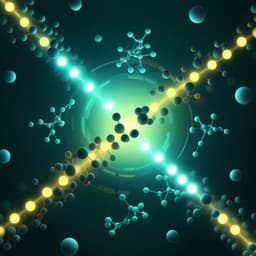
Engineering and Technology
Bias-free solar hydrogen production at 19.8 mA cm⁻² using perovskite photocathode and lignocellulosic biomass
Y. Choi, R. Mehrotra, et al.
This groundbreaking research led by Yuri Choi and colleagues unveils a photoelectrochemical cell that achieves an impressive photocurrent density of 19.8 mA cm⁻² for hydrogen production, utilizing organic-inorganic halide perovskite and lignocellulosic biomass. The process not only enhances solar hydrogen productivity but also converts lignin into valuable chemicals, showcasing an innovative approach to sustainable energy.
~3 min • Beginner • English
Related Publications
Explore these studies to deepen your understanding of the subject.







